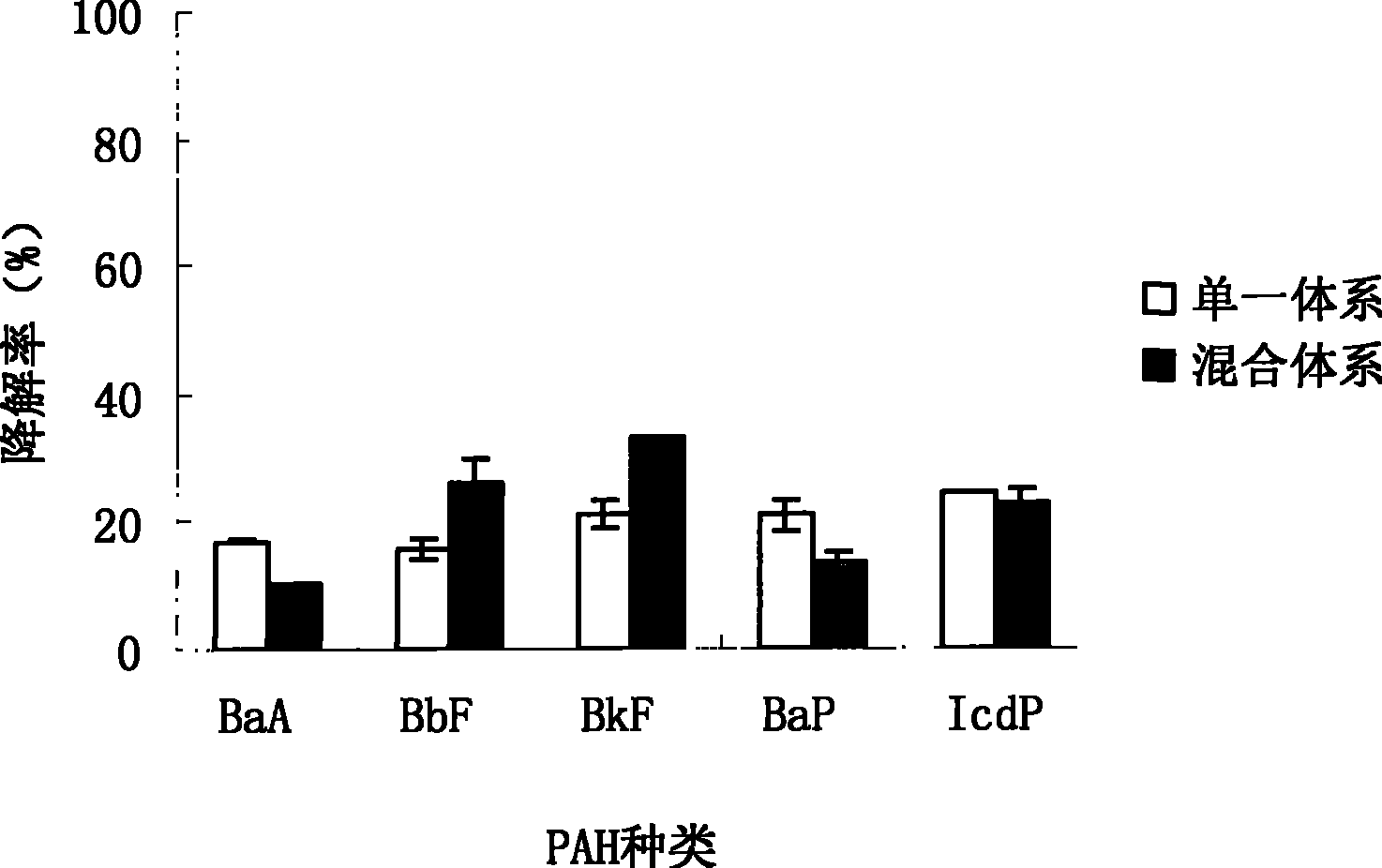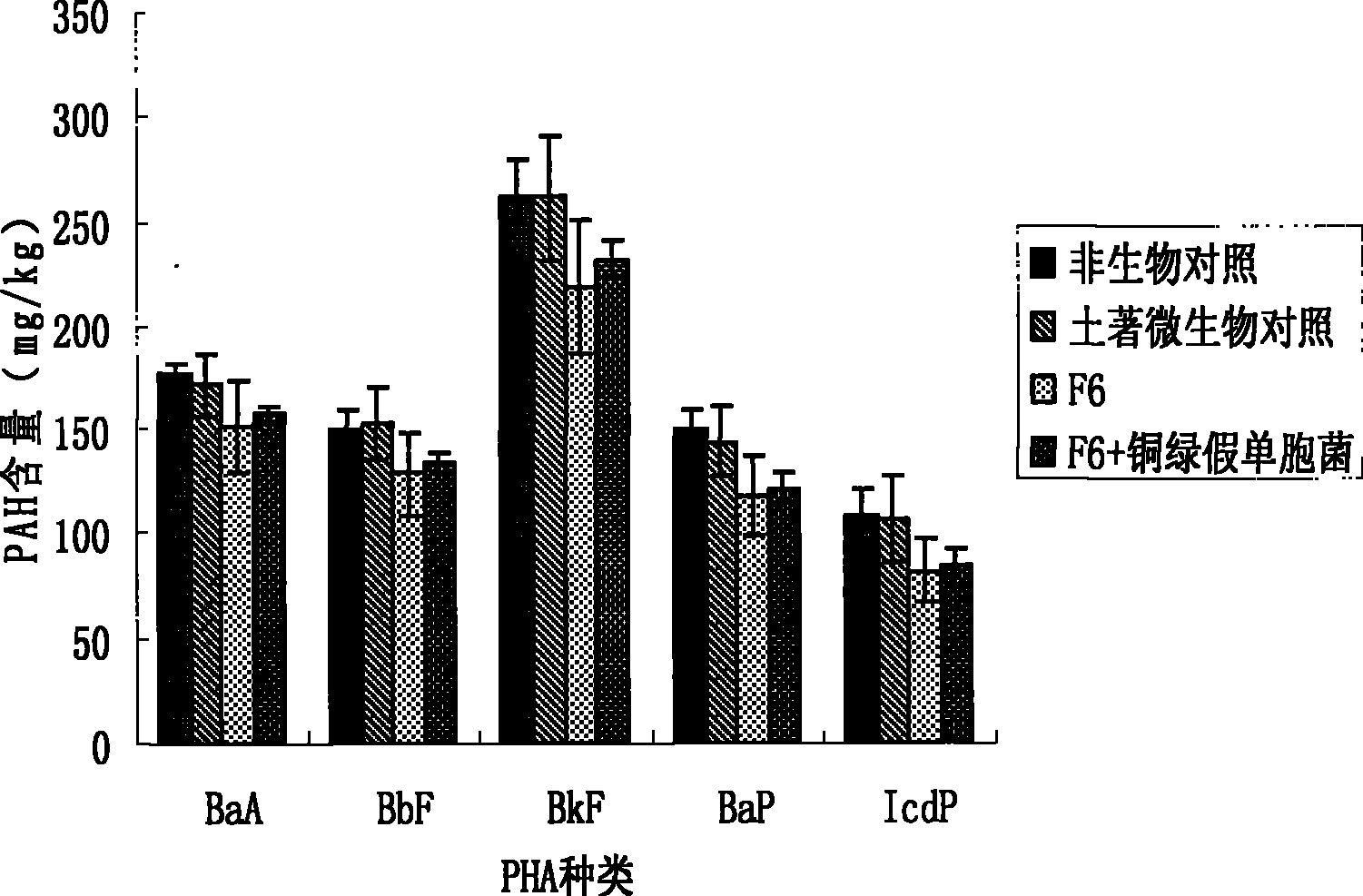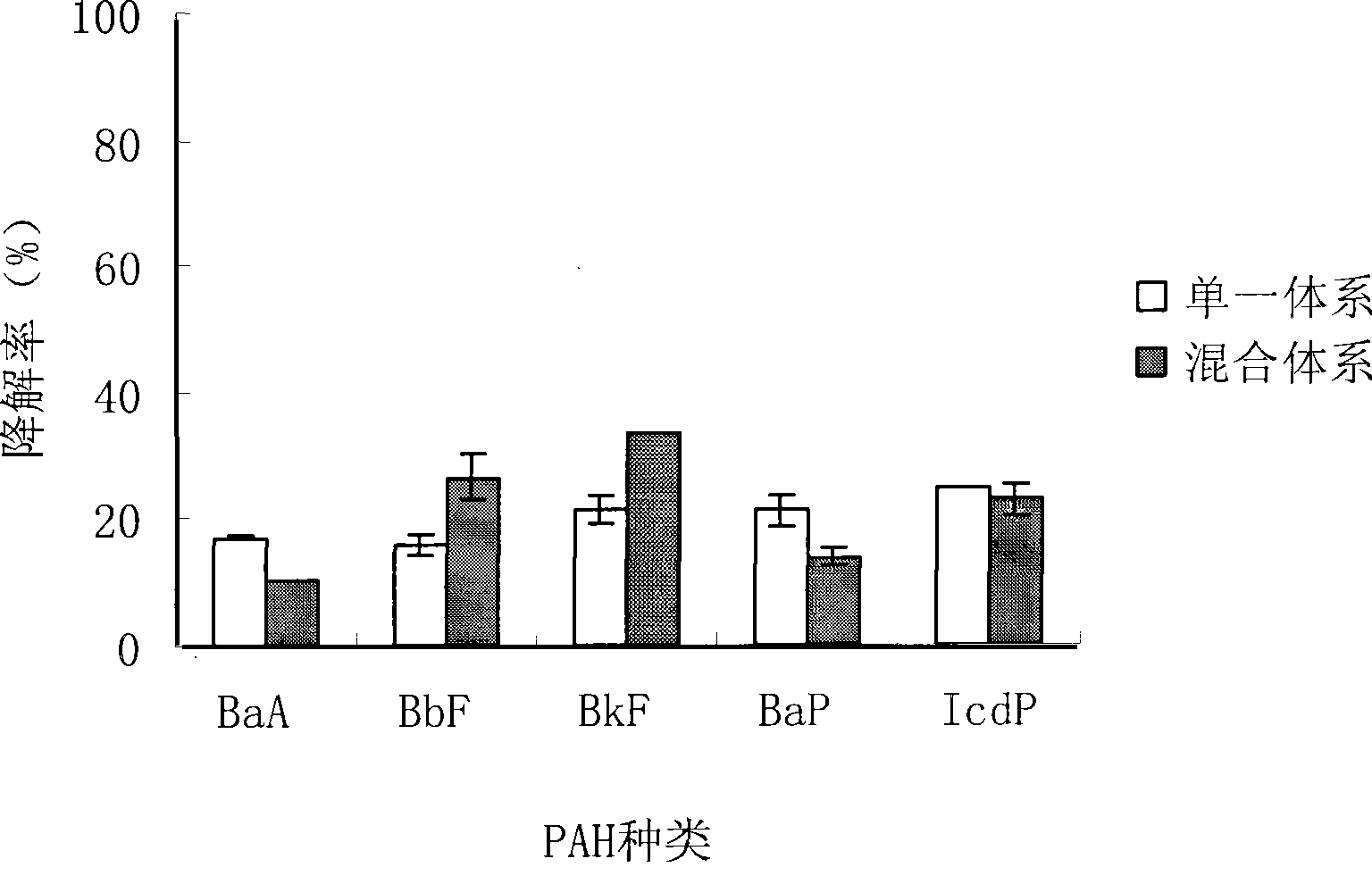One-strain high-ring polycyclic aromatic hydrocarbon degradation bacterium and uses thereof
A technology for polycyclic aromatic hydrocarbons and degrading bacteria, which is applied in the direction of fungi, microorganisms, biochemical equipment and methods, and can solve problems such as increasing research efforts
- Summary
- Abstract
- Description
- Claims
- Application Information
AI Technical Summary
Problems solved by technology
Method used
Image
Examples
Embodiment 1
[0012] Embodiment 1: Paecilomyces variotii (Paecilomyces variotii) F 6 The screening separation and its PAH degradation performance.
[0013] Put 10g of fresh soil samples into a 250ml Erlenmeyer flask, add 90ml of sterilized sterile aqueous solution, and shake on a reciprocating shaker for 30min at 28°C (150r / min). After the solid particles have stood still for 30 minutes, take part of the suspension and dilute to obtain a series of suspensions 10 -1 , 10 -2 , 10 -3 , 10 -4 , 10 -5 , 10 -6 , 10 -7 , respectively take 1ml and evenly spread on the agar plate containing high ring PAHs (three parallel samples), culture at 28°C. After 5-12 days of growth, single colonies with different characteristics (mycelium) and vigorous growth were selected and transferred to PAHs-free MYEA medium. The pure strains were obtained by streaking repeatedly on the solid medium plate. The purified strains were stored on a slant at 4°C. Fungal culture medium (MYEA): malt extract, 0.2%; yea...
Embodiment 2
[0016] Example 2: Effects of various growth factors on the degradation effect of high-ring PAH-degrading bacteria
[0017] 1. Select pH value, temperature, pollutant concentration, and C:N as the influencing factors (glucose is the source of C, (NH 4 ) 2 SO 4 N source), designed as L9(34) orthogonal experiment, the results are shown in Table 1.
[0018] 2. Insert the same number of dominant fungal spores into a series of Erlenmeyer flasks containing 50 mL of inorganic salt medium with different carbon-to-nitrogen ratios (the final number of spores in the medium is about 10 7 L -1 ), three repetitions were set; shake culture (150rpm, 28°C) for 5-7 days, and the degradation rate of ΣPAHs was measured, and the results are shown in Table 2.
[0019] The configuration method of above-mentioned inorganic salt medium is: inorganic salt basal medium (g·L -1 ): MgSO 4 ·7H 2 O, 0.2; CaCl 2 2H 2 O, 0.01; FeSO 4 ·7H 2 O, 0.005; KH 2 PO 4 , 0.4; Na 2 HPO 4 12H 2 O, 0.6; dis...
Embodiment 3
[0029] Example 3: Paecilomyces variotii F 6 Degradation effect on PAHs artificially polluted soil
[0030] 1. As shown in Table 4, the C of the artificial blending soil, the amount of N is relatively low (PAHs trace can be ignored), according to the optimal C: N ratio determined in Example 2, adding glucose and ammonium sulfate to adjust the content is C: 8g / kg, N: 0.8g / kg, adjust the moisture content to 60%-70%. Prepare nutrient solution: glucose: 19.2g / L, ammonium sulfate: 3.5g / L, deionized water 1L. (calculated on the basis of glucose 20g / kg).
[0031] Table 3 The content of each nutrient element in the soil
[0032] sample
Organic carbon (g / kg)
Total nitrogen (g / kg)
Available phosphorus (g / kg)
Available Potassium (mg / kg)
clean soil sample
4.16
0.43
0.007
0.9
[0033] 2. Take 12 parts of 50g soil, add 25ml / part of nutrient solution, that is, C: 8g / kg, N: 0.8g / kg (10:1), mix them evenly and put them into a sterilized pet...
PUM
 Login to View More
Login to View More Abstract
Description
Claims
Application Information
 Login to View More
Login to View More - R&D
- Intellectual Property
- Life Sciences
- Materials
- Tech Scout
- Unparalleled Data Quality
- Higher Quality Content
- 60% Fewer Hallucinations
Browse by: Latest US Patents, China's latest patents, Technical Efficacy Thesaurus, Application Domain, Technology Topic, Popular Technical Reports.
© 2025 PatSnap. All rights reserved.Legal|Privacy policy|Modern Slavery Act Transparency Statement|Sitemap|About US| Contact US: help@patsnap.com



